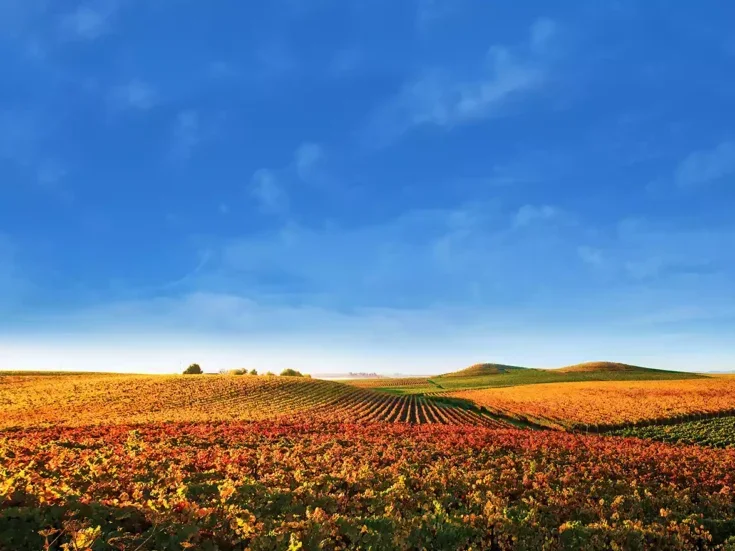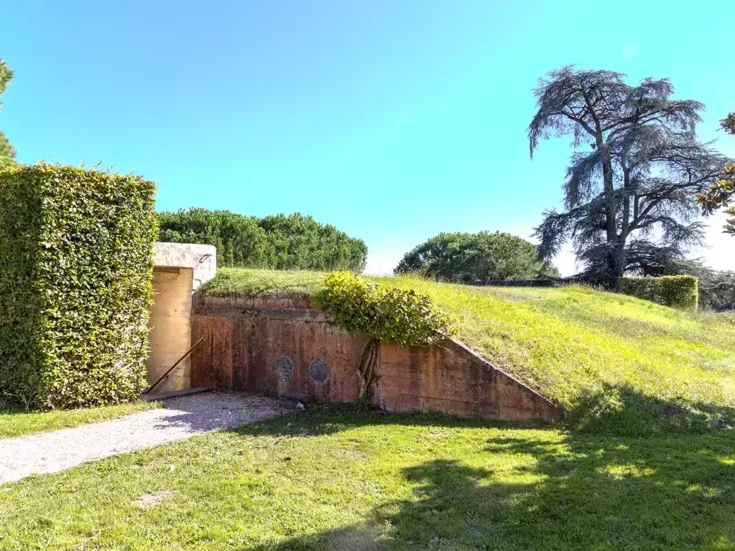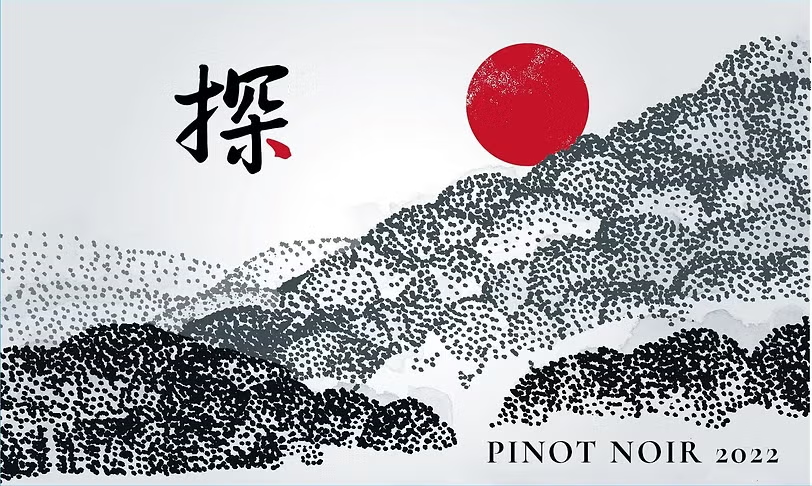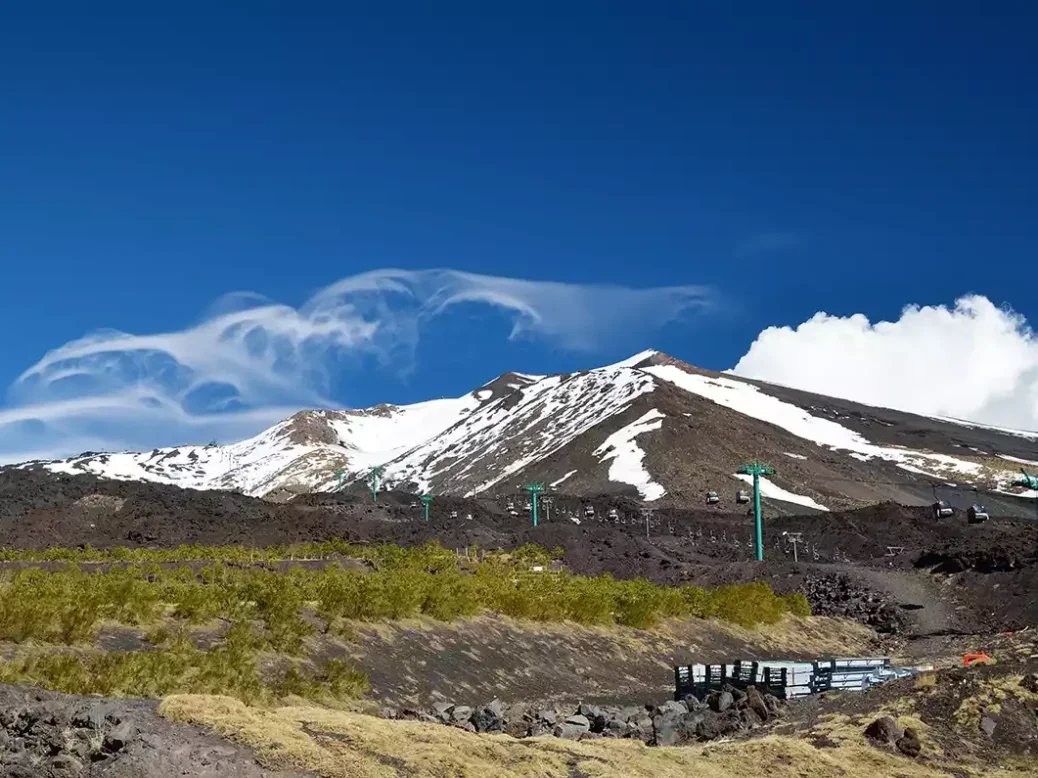
Mount Etna has established a reputation for fine reds with the most elegant examples of Nerello Mascalese coming from the north side of the volcano, so I was surprised on a recent visit to find a preoccupation with Etna Bianco DOC fuelled by a rash of recent planting from 2016.
Carricante, the principal variety in Etna Bianco, which must include 60% or 80% in Superiore versions, ripens slowly retaining its natural high acidity. It thrives in volcanic vineyards particularly at very high altitude. Is north Etna a suitable place to make terroir-driven white wine or is it more of a reaction to the global thirst for fine white wine?
After visiting six producers in north Etna in the municipalities of Castiglione di Sicilia and Randazzo, I tasted 40 Etna Bianco samples at Sicily’s en primeur event in the hope of finding an identity to distinguish north Etna Carricante from the expressions of vineyards on the east and west faces of the volcano where the conditions are different.
Tenuta di Fessina: A lesson in Carricante
I paid a visit to Tenuta di Fessina which has three estates, one on each face of Etna. The north side of Etna is cooler than the west face and there is a significant drop in temperature at night. “Rovittello is very cold and rigid,” says owner and winemaker Jacopo Maniaci. “The north is enclosed by the volcano and the Nebrodi and the climate can be austere.”
The east side is the coolest. It faces the sea which moderates the temperature and influences the climate with breezes and rain, so it is also the wettest side, but most significantly it loses the sun by 5pm.
Altitude is a significant factor wherever Carricante is grown. Where the vineyards can reach 900m (3,000ft), wine from the warm southwest face will have singing acidity. Acidity is supported in Etna Bianco from all sides of the volcano by savory sapidity.
Tenuta di Fessina only grows Carricante on the east and south-west faces. “North is not Carricante’s homeland. Carricante was born at high altitudes east and in Viagrande” explains Jacopo Maniaci. “It’s too windy and hot for Carricante on the north side,” where he tells me vineyards are permitted only to 800m (2,620ft), while they can be planted up to 1,000m (3,280ft) on the southwest slopes. “I prefer to grow Carricante at higher altitudes where the TA, malic, and pH behave in a different way. I miss the soul of Carricante when they grow it at lower altitude. Unfortunately, the space available in the east and southwest is not enough. And the logistics are more difficult, and costs are higher.”
Tasted side by side, Fessina’s two Etna Bianco wines eloquently illustrate the styles typical of the two well established regions. From the southwest A’ Puddara Riserva Speciale Vigne Alte SM 2021 is full, rich, and slightly tropical with umami minerality and punchy acidity. It comes from Biancavilla the most southwesterly of Etna’s municipalities. “I always register more core and pulpiness in the southwest with more herbs, salt, and citrus in the east,” remarks Jacopo who explains the west slopes bathe in sunshine until 9pm, giving the fullness and richness of structure.” However, Carricante retains its acidity thanks to the high altitude and at 1,000m (3,280ft) these vines are located as high as it gets. The 90-year-old bush vines come from the top two terraces of Fessina’s Puddara vineyard. It is a special bottling in memory of Silvia Maestrelli who founded the estate and championed Carricante from Biancavilla.
Jacopo is keen to point out that the soil is equally responsible for the difference in style. “It’s way older here than the volcano itself which is 600,000 years old. I have a bit of clay, limestone, and tufo giallo mixed up with the volcanic soil in Biancavilla.” Puddara is located in the contrada (single vineyard) of Spadatrappo. But Jacopo remarks that in the southwest “the contrada are few and immense compared with the fragmentation we have in the north and are less meaningful than the producer.”
On the east face there is a contrada with which all Etna lovers are familiar, Caselle in Milo—the only municipality from which Etna Bianco DOC Superiore can be produced. Carricante from the east face has attracted fevered international attention. Its striking profile is the most easily identifiable among Etna whites. Who can resist the energetic, straight, crisply defined profile of these wines with their vibrant acidity and oyster-shell minerality?
Tenuta di Fessina Il Musmeci Bianco Etna Superiore 2021 is much more restrained than A’ Puddara, but super intense and keen. I like the salty minerality and vigorous finish. The 90-year-old vines are located in Caselle at 800m (2,620ft).
The contrast between east and west is equally well illustrated by Benatis’s single-vineyard Etna Bianco. Succulent, spicy, and juicy with apricot fruit from Contrada Cavaliere on the west side contrasts with the floral notes and pure, crystalline focus of Rinazzo Contrada Etna DOC Bianco Superiore 2022 from the east side.
From the east side, Cantina Maugeri also caught my eye with their Etna Bianco Superiore Contrada Volpare. 2022 is deliciously silky-salty and layered, while Volpare Frontebosco has notable drive and sapidity. Also Pietradolce, a North Etna producer making white from the east side. Archineri Bianco 2022 is mineral sharp, stylish and shiny. From the warm ’22 vintage the east side has certainly turned out some fresh and lively wines.
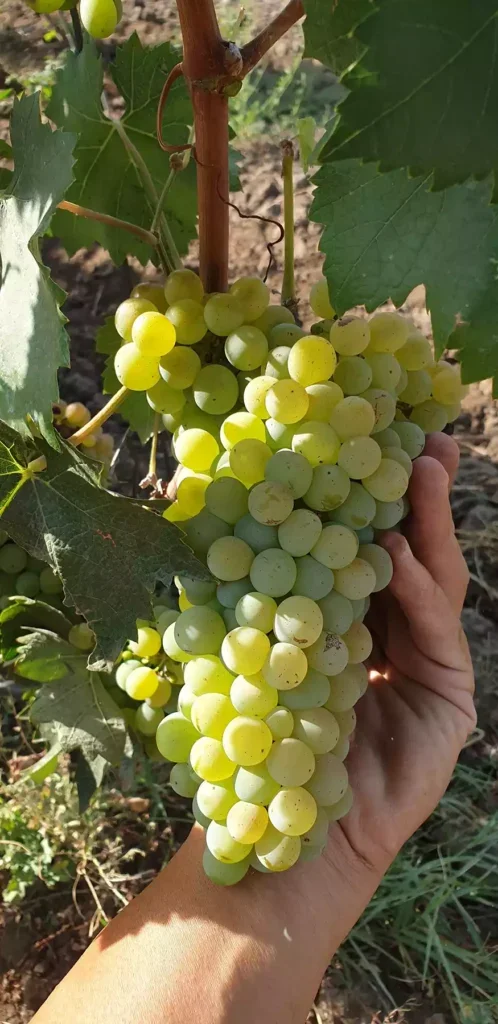
North Etna Bianco
So who is planting Carricante in north Etna? Well for one, Giuseppe Russo, better known for his terroir-driven contrada reds. Giuseppe observes, “Traditionally there is no Carricante here, not because it was no good, but because Nerello Mascalese ripened well. Carricante was only planted on the east side of Etna because they couldn’t ripen Nerello Mascalese.”
Six years ago, Giuseppe planted 3ha (7.4 acres) of Carricante at 630m (2,070ft) in the deepest soils of contrada Feudo and produced his first Fuedo Etna Bianco in 2023. Aged in large old oak, this has a rounded soft-salt profile with bitter lemon pith to balance, while San Lorenzo Etna Bianco 2023 is a bigger more muscular wine, richly textured, full and earthy. They mirror the profile of the reds grown in these contrade and from young vines are quite impressive.
Meanwhile newcomers from Tuscany, the Moretti family who made their fortune in fashion, have planted a patch of Carricante and a little Minella Bianca, often found in a traditional field blend, on a rocky terrace of sandy clay at 650m (2,130ft). They bought a 20ha (50 acres) parcel of land including 1.5ha (3.7 acres) of old Nerello Mascalese in contrada Santo Spirito in 2010. Animaetnea Animalucente Etna Bianco DOC, made from young vines, is piquant and richly textured, has fennel notes and citrus pith, and is bitter in a good way, possibly from the lees-stirring in tank.
I visited another relatively new producer Tenuta Ferrata. The Virlinzi bothers bought the 90ha (220 acres) property in Castiglione di Sicilia to create a golf course. It is named after the Circumetnea Railway which crosses the land and in 2015 they changed track and began planting vines on 22ha (54 acres).
Veni Etna Bianco 2022, Carricante made with some skin contact and aged in 500-litre barrels, is rounded, richly textured and aromatic with notes of apricot fruit and an attractive phenolic bite. Some imprint of winemaking, but you also sense the lower altitude. Contrada Moscamento and Fossa San Marco lie at 650–680m (2,130–2,230ft).
When the Cusumano family arrived in north Etna in 2013, Alberto Cusumano recalls, “We saw Nerello Mascalese as the prince of the territory.” But they had an epiphany after fermenting 200 litres of purchased Carricante juice. Although at first they disliked the resulting wine, it evolved pleasingly and convinced them of Carricante’s potential with bottle age. Hence they make two releases of their Etna Bianco, soon after bottling and five years post vintage.
Alta Mora Etna Bianco DOC TYME 2018 combines the fresh acidity of this cool wet vintage with developed notes of hay and honey. This was made from two north Etna vineyards, Contrada Pietamarina, a small volcanic wizard hat just outside the winery, and Verzella.
Seeking greater freshness, particularly in recent hot vintages, the Cusumanos have purchased and planted Arrigo, a contrada at higher altitude—750m (2,460ft)—in the cooler northeast municipality of Linguaglossa. Alta Mora Etna Bianco DOC from the warm 2022 vintage is sturdy, nutty with smoky minerality.
At the en-primeur event the northern Etna Bianco from 2022 and a few 2021s came in a variety of styles and quality. Many vineyards have been planted recently and young vines are likely to be more sensitive to winemaking techniques and less reflective of terroir than older vines. Added to which the warm and dry 2022 vintage probably emphasizes the character of the lower altitude vineyards of North Etna. One or two wines were quite spicy, even exotic.
That aside, my general impression of north Etna Bianco is of fullish, rounded, and quite richly textured wine. They can be fresh and sapid, often with an attractive bitterness, but without the racy marine minerality, vivacity, and focus of the best wines from the east side and more savory, less fruity, and softer than the higher vineyards on the southwest side. In the coming years, a clearer identity should emerge, so I don’t say this with any certainty.
What is beyond doubt is the market demand for Etna DOC Bianco and the eagerness of many north Etna producers to meet it. While Giuseppe Russo says “producers who are native to North Etna want to preserve Nerello Mascalese,” he has planted one quarter of his 15ha (37 acres) estate with Carricante. This brings us back to the question of terroir and employing the varieties through which it is best expressed. Nerello Mascalese has been historically planted on the north side of Etna for good reason.

